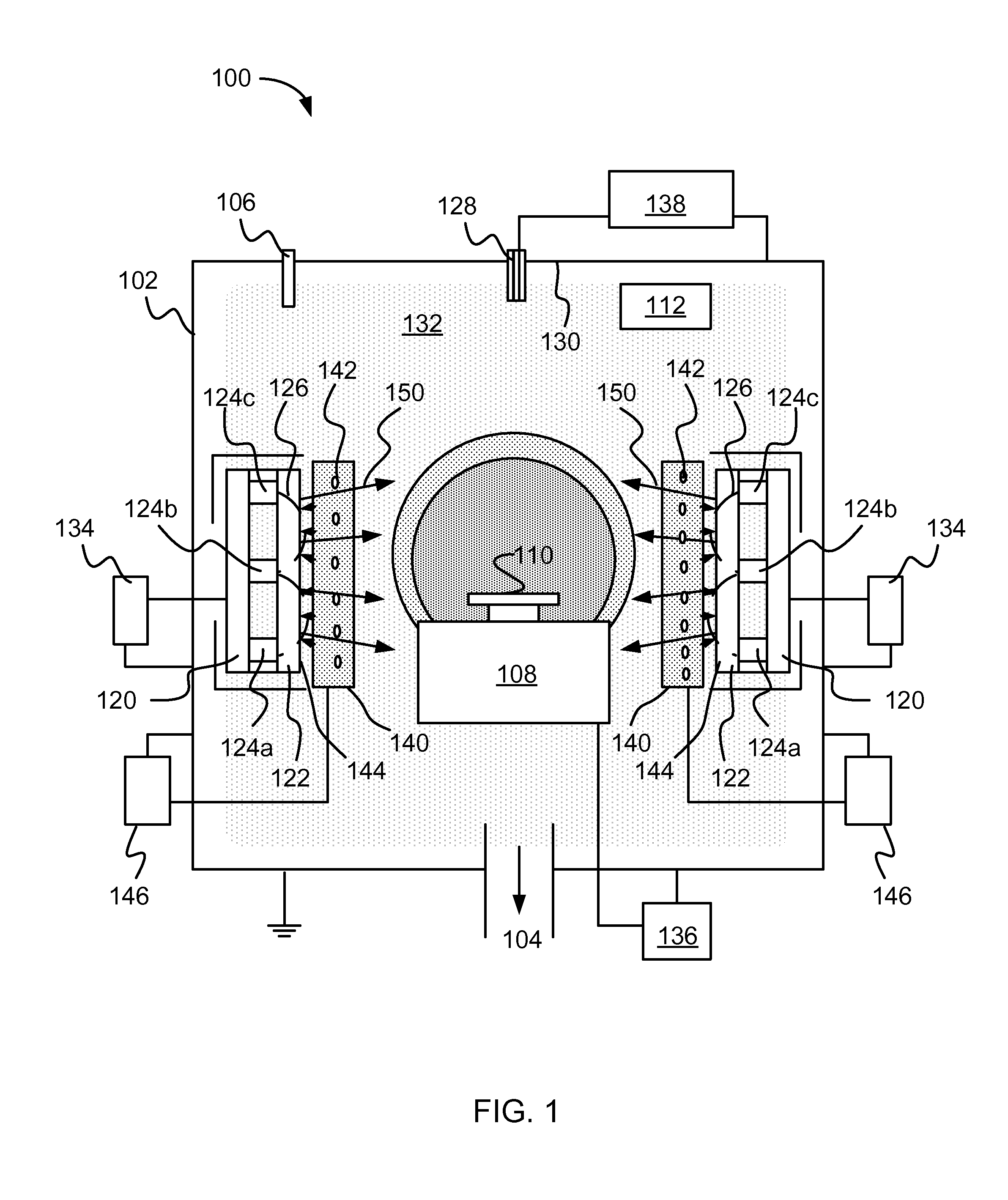Method And Apparatus For Producing An Ionized Vapor Deposition Coating
a technology of ionization and vapor deposition, which is applied in the direction of vacuum evaporation coating, coating, plasma technique, etc., can solve the problems of poor adhesion, poor structure and/or morphology, and relatively low density of the coating produced in such a manner
- Summary
- Abstract
- Description
- Claims
- Application Information
AI Technical Summary
Benefits of technology
Problems solved by technology
Method used
Image
Examples
example 1
[0084]A DC magnetron with a disc titanium target 100 mm in diameter was used for magnetron sputtering titanium in an Ar—N2 plasma during deposition of TiN coatings. The coatings were deposited on disc SS coupons 3 cm diameter×0.3 cm thick. The substrates to be coated were ultrasonically cleaned in acetone and isopropyl alcohol prior to loading in a vacuum processing chamber. The substrates were positioned on a rotary substrate holder, wherein the diameter of rotation was 200 mm, bringing the substrates to a distance of 20 cm from the magnetron target, wherein the substrate holder was connected to RF 13.56 MHz bias power supply. The substrates were preheated to 250° C. as determined by thermocouple measurements using radiation heaters installed behind rotary substrate holder in the vacuum chamber.
[0085]An ionizing grid of tungsten filaments included filaments having a diameter of 250 μm was installed in front of the magnetron target at a distance of 10 mm from the target surface as i...
example 2
[0087]A nickel coating was deposited using the apparatus illustrated in FIG. 2. The cathode target described above in Example 1 was used. Similarly, substrate coupons were installed 20 cm from the magnetron target on the rotary substrate holder having a 500 mm diameter of rotation. The substrates were preheated to 250° C. by conventional heaters installed in the coating chamber. The ionizing filament grid included tungsten filaments having a 250 μm diameter. The filaments were connected to an RF generator with a frequency of 13.56 MHz. The autopolarization bias potential, which is a DC voltage induced on filament grid by applying the RF bias in a presence of plasma was set to 150 volts and the heating power supply was disconnected from the filament grid. The DC autopolarization bias was measured by voltameter connected to the grid via LC-filter. The remainder of the processing parameters was the same as in Example 1.
[0088]FIG. 24 illustrates the ion current collected by a 10 cm diam...
example 3
[0090]A TiN coating was deposited using the apparatus illustrated in FIG. 2. The cathode target described above in Example 1 was used. Similarly, substrate coupons were installed 20 cm from the magnetron target on the rotary substrate holder having a 500 mm diameter of rotation. The substrates were preheated to 250° C. by conventional heaters installed in the coating chamber. The ionizing filament grid included tungsten filaments having a 250 μm diameter. The filaments were connected to a DC bias power supply to set up 100 volts of bias potential to the filament grid. The heating power supply was also connected to the filament grid and the heating current was set to 12 amperes to reach the thermionic emission temperature of about 2100° C. of the tungsten filament grid. The remainder of the processing parameters was the same as in Example 1.
PUM
| Property | Measurement | Unit |
|---|---|---|
| Length | aaaaa | aaaaa |
| Carrier concentration | aaaaa | aaaaa |
| Power | aaaaa | aaaaa |
Abstract
Description
Claims
Application Information
 Login to View More
Login to View More - R&D
- Intellectual Property
- Life Sciences
- Materials
- Tech Scout
- Unparalleled Data Quality
- Higher Quality Content
- 60% Fewer Hallucinations
Browse by: Latest US Patents, China's latest patents, Technical Efficacy Thesaurus, Application Domain, Technology Topic, Popular Technical Reports.
© 2025 PatSnap. All rights reserved.Legal|Privacy policy|Modern Slavery Act Transparency Statement|Sitemap|About US| Contact US: help@patsnap.com



